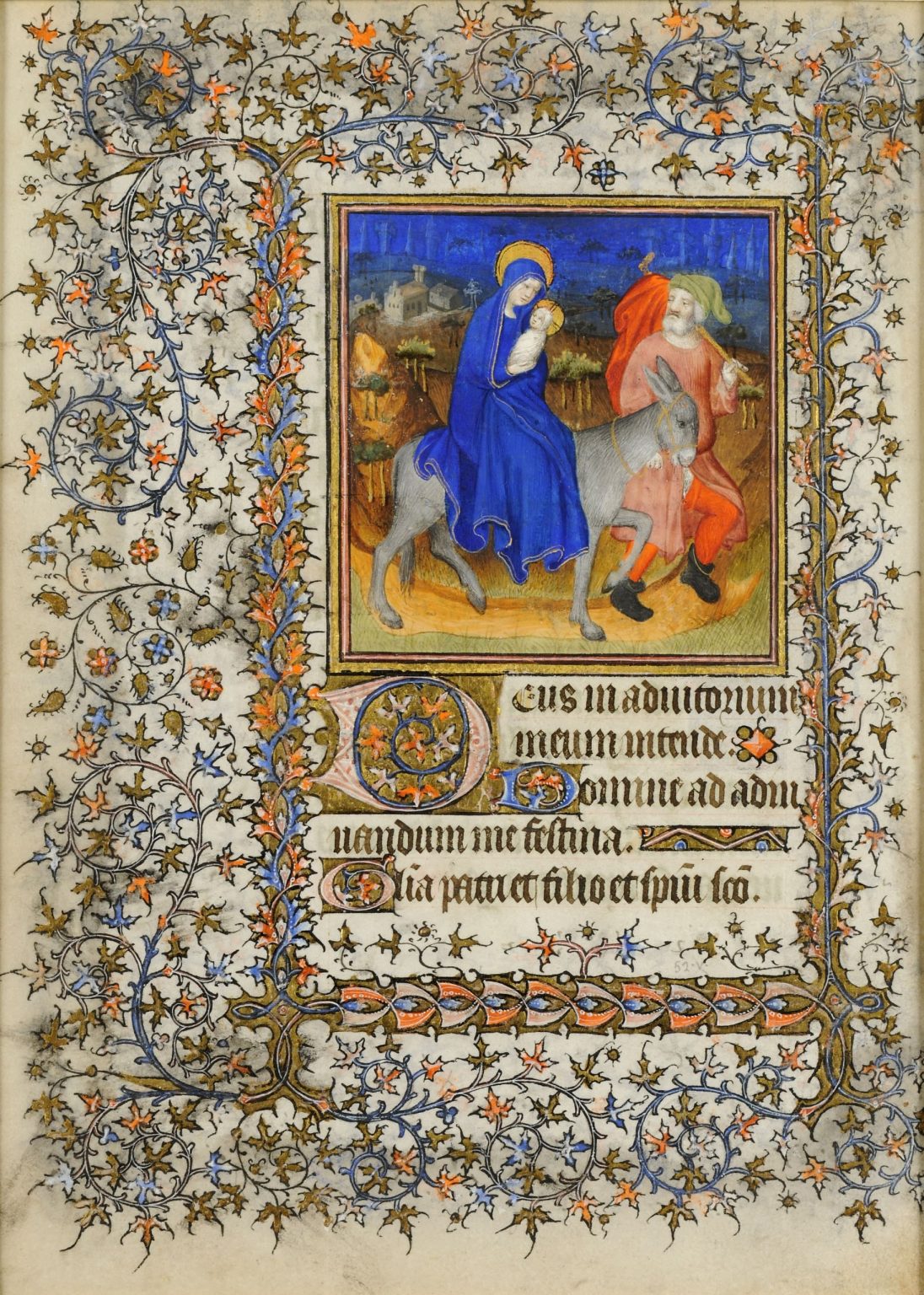Manuscript Cutting: Leaf from a Book of Hours with a Miniature showing the Flight into Egypt

Studio of the Master of the Boucicaut Book of Hours
Leaf from a Book of Hours with a Miniature showing The Flight into Egypt
Paris, 1408 (with later retouchings)
Pigments, gold leaf and ink on parchment, 176 x 132 mm
Barber Institute of Fine Arts (No. 69.6)
In the brilliantly coloured miniature at the centre of this leaf, we see the mother Mary carrying the newborn baby Jesus into Egypt while riding on the back of a donkey. Mary, while holding Jesus, is being led by her husband Joseph, who carries their baggage on a stick. The leaf comes from a damaged and dismembered Book of Hours, which, it has been proposed from surviving internal evidence, may have been made for a young Breton nobleman.
This leaf, with texts for Hours of the Virgin at None (recto) and Vespers (verso, with miniature) was folio 52 of a high-quality Book of Hours that remained intact until the 1930s. The complete manuscript was one of several severely damaged in a disastrous flood in 1846 while in the possession of the important collector John Boykett Jarman (1782-1864), a London goldsmith and jeweller. Jarman employed William Charles Wing (1801-1875) to repaint several of its damaged miniatures, including, it is now believed, this one – the background and the donkey in particular are likely to have been retouched by Wing. The restored Book was sold after Jarman’s death in 1864, when it was noted that it contained 28 miniatures. In 1929, it was bought by the American-born mining magnate and collector Sir Alfred Chester Beatty (1875-1968), who removed and donated or sold some of the leaves with miniatures in the early 1930s, with those remaining being sold in 1969 after his death. These leaves are now dispersed to public and private collections across western Europe, Australasia and the USA. All of them share the design motifs as here of a thick U-shape border to the miniature and text block, set within intricate and sinuous tendrils of ivy. In style, they are close to – and probably modelled on – the celebrated Belles Heures of Jean de France, duc de Berry, made by the Limbourg Brothers in Paris in about 1405-09, and now in the Metropolitan Museum of Art, New York.